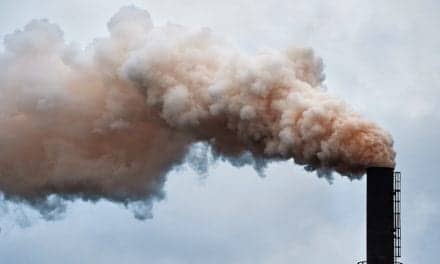For the first time research has shown that exposure to common air pollutants such as particulate matter (PM10/PM2.5) is linked to hair loss in humans, according to data presented at the 28th EADV Congress in Madrid.1
The research was conducted by exposing cells from the human scalp at the base of hair follicles, known as human follicle dermal papilla cells (HFDPCs), to various concentrations of PM10-like dust and diesel particulate. After 24 hours the researchers performed a scientific process, known as western blotting, to detect the levels of specific proteins in the cells. The results showed that the presence of PM10 and diesel particulate decreased levels of β-catenin, the protein responsible for hair growth and morphogenesis.
The study also revealed that the levels of three other proteins (cyclin D1, cyclin E and CDK2), which are responsible for hair growth and hair retention, were decreased by PM10-like dust and diesel particulate in a dose dependent manner, meaning that the greater the level of pollutant, the greater the decrease in proteins was found.
Particulate matter (PM) is the term used to describe a mixture of solid particles and droplets found in the air. PM is divided into two categories; PM10 which are particles with a diameter of 10 µm or smaller and PM2.5 which have a diameter of 2.5 µm or smaller.1 Both PM10 and PM2.5 are considered to be major pollutants and are linked to various serious health conditions, such as heart and lung disease, cancer and respiratory problems. In total, ambient air pollution is estimated to kill 4.2 million people every year3 but the effects on the skin and hair are not well known.
Sources of PM include the burning of fossil fuels, including petrol, diesel and other solid-fuels such as coal, oil and biomass as well as other industrial activities such as building, mining and the manufacturing of building materials like cement, ceramics and bricks.4
Lead researcher, Hyuk Chul Kwon from the Future Science Research Centre in the Republic of Korea, comments; “While the link between air pollution and serious diseases such as cancer, COPD and CVD are well established there is little to no research on the effect of particular matter exposure on the human skin and hair in particular. Our research explains the mode of action of air pollutants on human follicle dermal papilla cells, showing how the most common air pollutants lead to hair loss.”
References
- Effects of particular matter on human dermal papilla (Hyuk Chul Kwon). Presented at the 28th EADV Congress, Madrid, 9 October, 2019
- United States Environmental Protection Agency. Particulate Matter (PM) Pollution. Available at: https://www.epa.gov/pm-pollution/particulate-matter-pm-basics
- Air pollution. World Health Organization. Available at: https://www.who.int/airpollution/en/
- Ambient air pollution: Pollutants. World Health Organization. Available at: https://www.who.int/airpollution/ambient/pollutants/en/










